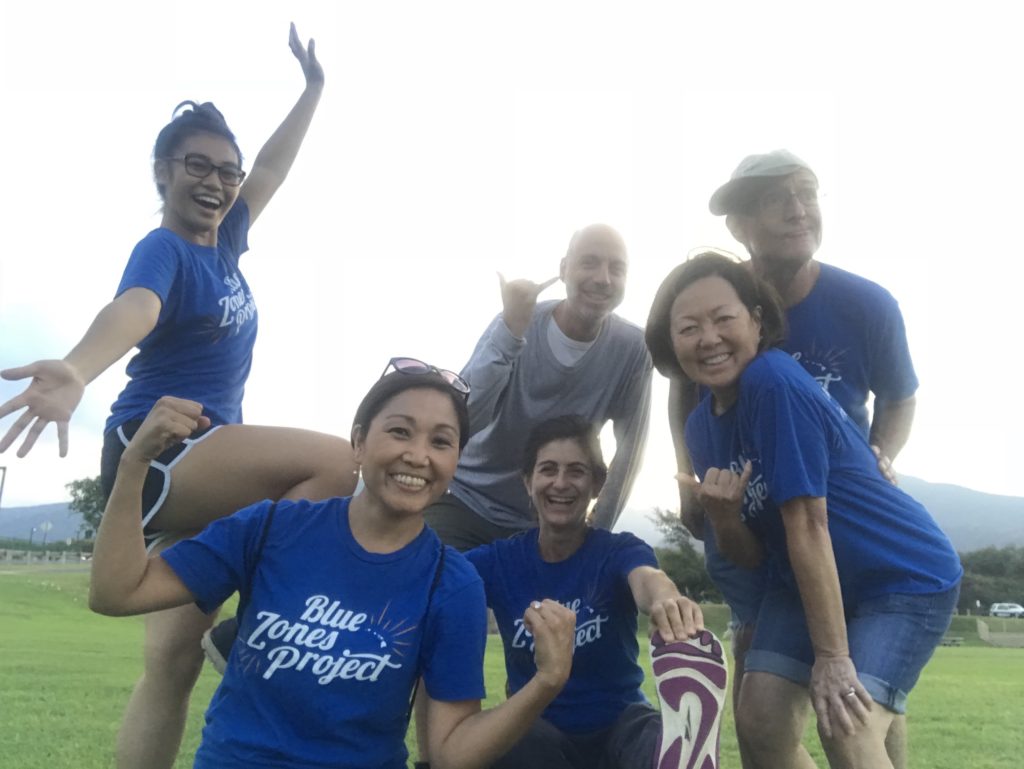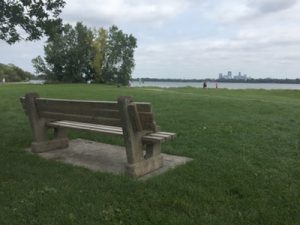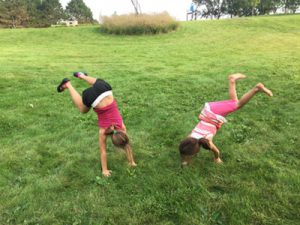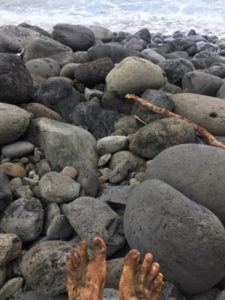
Now all of us were being given the opportunity to create a Moai with the intention that it would last for 10 weeks. As part of the process, we were gathered in a circle and asked to share a bit about our backgrounds. We were then asked to divide ourselves into groups by days and times when we might be available to walk. As none of us really knew each other, the division was rather random. (I found out later that all of us felt a little nervous about this). I became part of the group that consisted of members of two separate families. One was a retired couple, who had just recently returned to live in Maui after spending decades in the continental United States. The other, was a high school girl and her mother. I had met the mom and daughter briefly at the Purpose Workshop and remembered them well. I had sat at a table with them at the workshop and asked the mom about the Marine baseball cap she was wearing. I was touched as she told me with sadness and pride that she hadn’t seen her son for four years because of his service overseas.
Our group started chatting and agreed to meet on Sunday evenings. We quickly came up with the name Kahului Cruisers but none of us really knew what to expect. On that first night we met at a park in Kahului and started walking and talking. We shared a bit about our lives and it quickly became clear that we all liked each other. Over the next number of weeks we chose different locations to meet and walk. As I am a yoga teacher and Jamie, the high school student is an accomplished hula dancer and athlete, we decided to start our walks with some stretching. Before we knew it, we were laughing, dancing and joking together.
The Sunday walks quickly became a highlight of my week. They were an opportunity to spend time with lovely people whom I probably would not have met otherwise. We all came from different religious and cultural backgrounds and walking provided a wonderful opportunity to share our differences in a welcoming environment. Everyone was very patient with my questions as a newcomer to the island. We shared meals together including some extraordinary vegetarian potlucks When the 10 week period ended, it was clear to all of us that we had formed a very special friendship and we will continue to stay connected.
It’s now been almost a year since the Kahului Cruisers Moai was formed. While we do not currently walk every Sunday, we still do many things together. We all became Blue Zones ambassadors and participate as volunteers at many Blue Zones events. Thanks to my Moai, my Hawaiian vocabulary has expanded tremendously and I have attended numerous wonderful cultural events at Kamehameha High School. I share with my yoga students at Maui College and studios around the island about how health and wellness is not just about movement and nutrition but about being part of the community. I have been excited to support Jamie as she has chosen Blue Zones to be the center of her senior project. You might find us at various events on Maui creating spin art with kids while sharing with their parents the value of living the Power Nine.
I feel so fortunate to have happened upon that bingo game over a year ago. I consider myself to be someone who has lived a fairly healthy lifestyle. However, The Blue Zones project has helped me put my choices into a greater perspective. I now have a greater understanding of how my surroundings affect my choices for self-care and truly experience how change doesn’t have to be extreme to have results. I also spend more time noticing the infrastructure of every place I go. I ask questions such as: How do restaurants and grocery stores present their products? Are they presented in a way that supports the customers well-being or does the establishment just try to sell the most product, no matter the health consequences. What establishments serve the most variety of beans? Where in town are there places for people to gather outdoors? Does a city have sidewalks that are easily accessible?
I highly recommend participating in the Blue Zones Project. It might be by joining a Moai, attending a workshop, trying some recipes or just reading one of Dan Buettner’s books. By tapping in to this great resource you will experience a non-judgmental and accessible approach to creating positive change that supports all of us to live longer, better. And you also might find yourself eating more beans.


